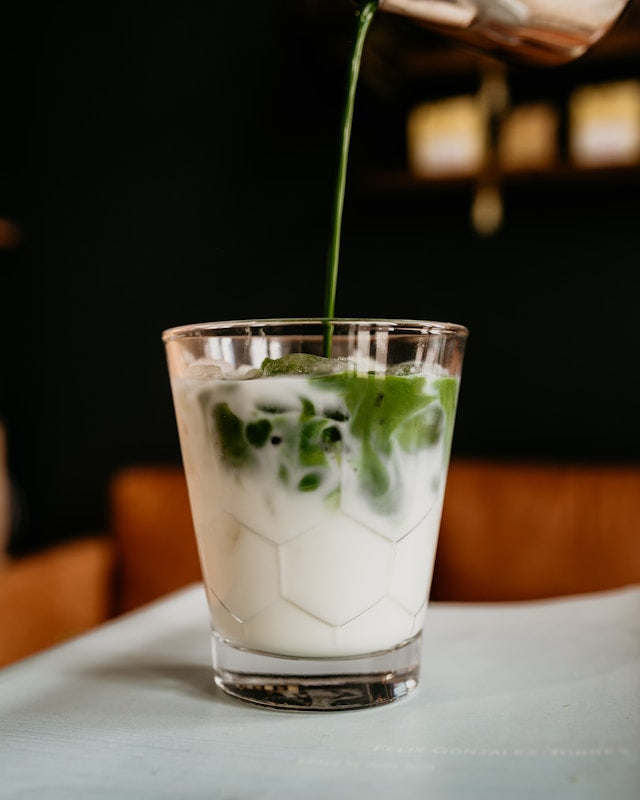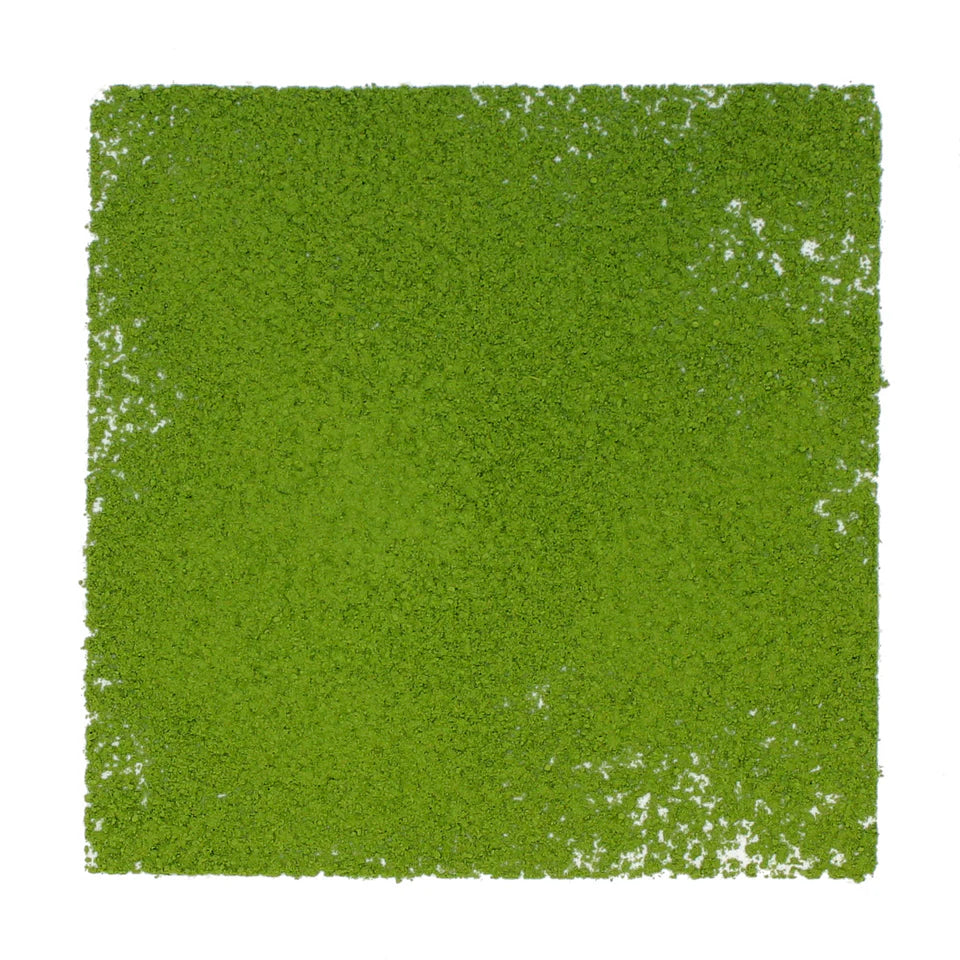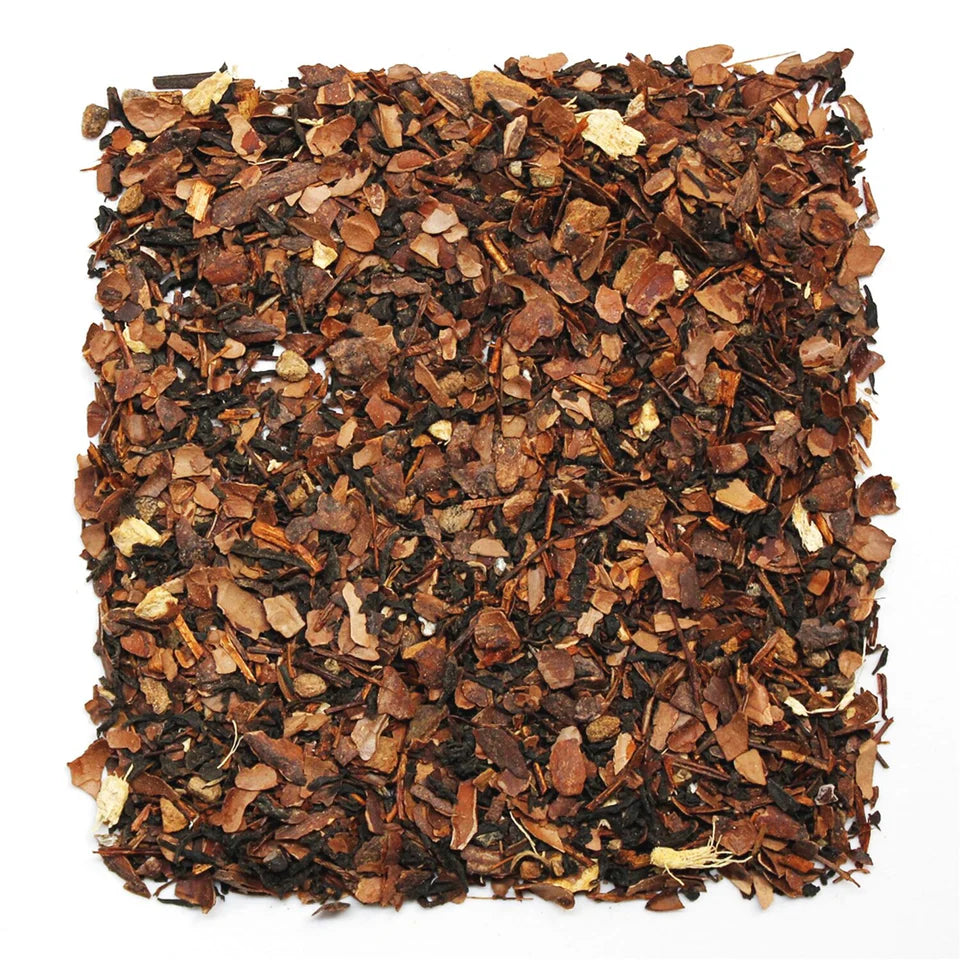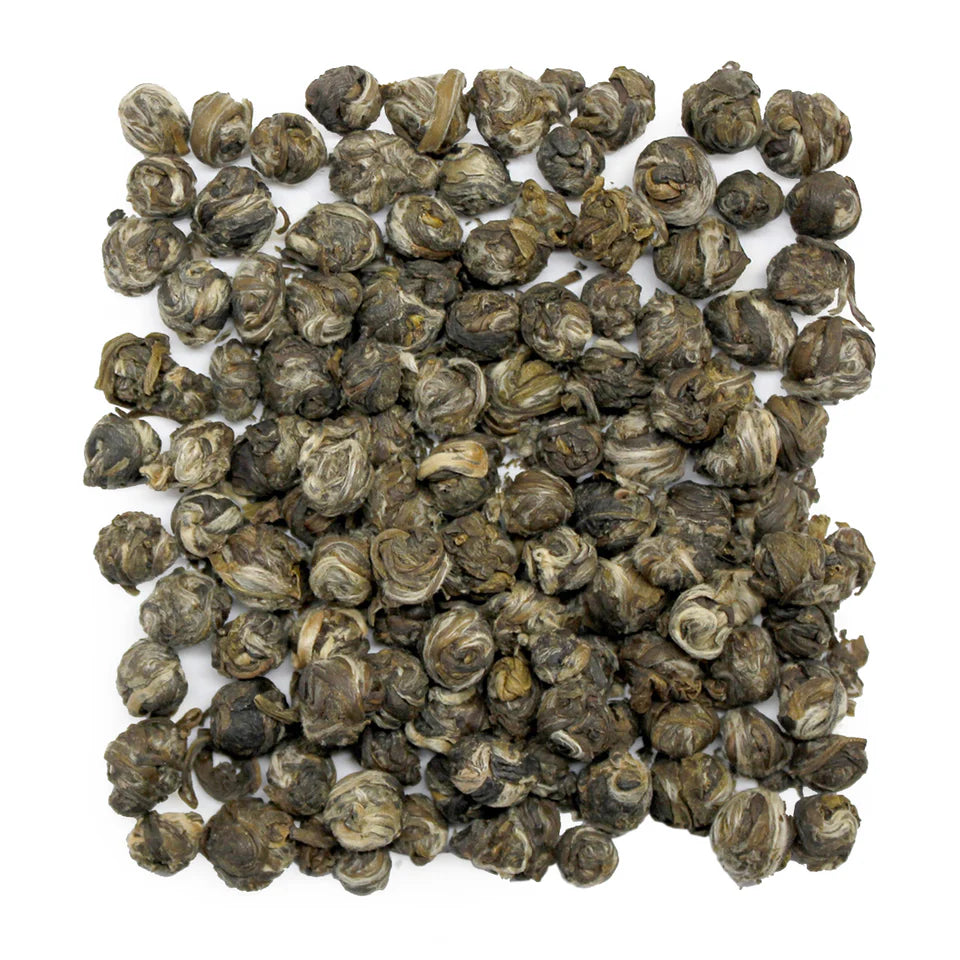How Matcha Conquered America's Cup
The Emerald Revolution.
In a sunlit corner of Chalait café in Manhattan's West Village, barista Emma Chen executes a ritual that would have seemed foreign to most Americans a decade ago. With practiced precision, she sifts brilliant green powder into a handcrafted ceramic bowl, adds precisely heated water, and whisks the mixture with a bamboo chasen until it transforms into a frothy, vibrant elixir. The customer waiting for this $6 matcha latte isn't a Japanese tea master or cultural scholar—she's a 23-year-old fashion merchandiser who discovered matcha through Instagram.
"I switched from coffee last year," explains Sophia Martinez, watching as Chen pours the emerald liquid over ice. "Matcha gives me sustained energy without the jitters, plus there's something mindful about the whole experience—even if I'm just grabbing it to go."
Scenes like this play out thousands of times daily across America, from specialty cafés in Brooklyn to drive-through windows in Boise. Matcha, once an obscure ceremonial tea known primarily to practitioners of Japanese chado (the "way of tea"), has completed a remarkable transformation into a mainstream American beverage, wellness supplement, culinary ingredient, and cultural signifier.
This powder's journey from ancient Buddhist temples to American mainstream represents more than just changing tastes—it reflects profound shifts in how Americans approach health, energy, cultural appreciation, and even identity in the 21st century.
From Zen Monks to Zoom Meetings: Matcha's Historical Journey
To understand matcha's American conquest requires first understanding its origins and traditional context. Unlike conventional teas where leaves are steeped and discarded, matcha consists of specially grown green tea leaves stone-ground into a fine powder, which is whisked with hot water and consumed entirely.
"The practice originated in China during the Song Dynasty but was perfected and preserved in Japan after nearly disappearing in its homeland," explains Dr. Kristin Surak, author of "Making Tea, Making Japan" and professor at the London School of Economics. "By the 12th century, Japanese Zen Buddhist monks had embraced matcha for its ability to promote calm alertness during meditation."
The tea's preparation evolved into chanoyu, the Japanese tea ceremony, a highly ritualized practice emphasizing mindfulness, hospitality, and aesthetic appreciation. For centuries, matcha remained primarily associated with this ceremonial context, its production methods and preparation techniques passed down through generations of tea masters.
"What many Americans don't realize is that matcha was never an everyday beverage in Japan," notes Surak. "It was specially reserved for formal tea ceremonies and Buddhist practice. The casual consumption we see today would have been unthinkable to most Japanese people throughout history."
Matcha first arrived in America through limited cultural exchanges—Japanese tea ceremonies occasionally presented at world's fairs or cultural exhibitions—but remained largely unknown to mainstream consumers until the early 2000s. Even then, it was primarily found in Japanese restaurants or specialty tea shops, often prepared incorrectly by Western standards.
The transformation began around 2015, when several forces converged: America's growing interest in functional foods, the rise of café culture beyond coffee, increasing Japanese cultural influence, and—perhaps most crucially—social media's ability to rapidly popularize visually striking consumables.
The Science in the Cup: Understanding Matcha's Allure
Matcha's American conquest isn't driven by taste alone. The powder's unique cultivation and composition create a nutritional and pharmacological profile that aligns perfectly with contemporary wellness priorities.
"The key distinction begins about three weeks before harvest," explains agricultural scientist Dr. Yoko Yamamoto, who studies tea cultivation in Uji, Japan's premier matcha-producing region. "Farmers cover the tea plants with shading materials that block up to 90% of sunlight. This stress response triggers significant changes in the leaves' chemistry."
This shading process increases chlorophyll production (creating matcha's vibrant green color) while dramatically boosting levels of L-theanine, an amino acid that produces a state of "calm alertness" when combined with caffeine. The youngest leaves are harvested, quickly steamed to prevent oxidation, dried, and stone-ground into the fine powder that defines matcha.
"The result is a uniquely balanced stimulant," explains neuropharmacologist Dr. Andrew Scholey, who has studied tea's cognitive effects at Swinburne University. "Matcha contains approximately 70mg of caffeine per ceremonial serving—less than coffee's typical 95-200mg but more than regular green tea. However, the high L-theanine content modulates caffeine's effects, creating a sustained energy release without coffee's characteristic peak and crash."
This biochemical profile produces what matcha enthusiasts describe as "calm energy"—mentally alert but physically relaxed. Research suggests this combination may improve attention, reaction time, and working memory while reducing the anxiety sometimes associated with caffeine consumption.
Matcha also contains exceptionally high concentrations of catechins, particularly epigallocatechin gallate (EGCG), potent antioxidants linked to potential health benefits including improved metabolism, reduced inflammation, and lower cardiovascular disease risk. Unlike steeped green tea, matcha provides the full catechin content of the leaf—one cup may contain the antioxidant equivalent of three cups of regular green tea.
"When we examine matcha's biochemical profile, it's almost perfectly designed for today's performance-oriented wellness culture," notes nutritionist and researcher Maya Henderson. "It offers clean energy, antioxidant protection, metabolic support, and cognitive enhancement—all priorities for today's health-conscious consumers."
These properties help explain why matcha has transcended traditional beverage categories to become a functional ingredient in everything from energy bars to face masks. Each application capitalizes on different aspects of matcha's biochemical profile—its stimulant properties for energy products, antioxidants for beauty items, and distinctive color and flavor for culinary applications.
From Commodity to Cultural Symbol: Matcha's Market Transformation
Matcha's American market evolution followed a pattern seen with other specialty foods that transition from obscurity to ubiquity—starting with high-end specialty purveyors before spreading through concentric circles of adoption until reaching mass market.
"What's fascinating about matcha is how rapidly it moved through these market phases," observes food trend analyst Justine Rodriguez. "Products typically take 5-7 years to complete the journey from specialty shops to mainstream grocery. Matcha did it in about three years."
The first modern American matcha adopters were tea connoisseurs seeking authentic Japanese ceremonial experiences. Companies like Ippodo Tea, a 300-year-old Kyoto institution that opened its New York branch in 2013, catered to these traditionalists with imported ceremonial-grade products and education about proper preparation techniques.
By 2015, a new wave of matcha-focused startups emerged, designed specifically for American consumers unfamiliar with traditional preparation methods. Companies like Cha Cha Matcha and MatchaBar created Instagram-worthy café experiences that maintained matcha's premium positioning while making it accessible through familiar formats like lattes and smoothies.
"We recognized that most Americans weren't going to adopt traditional matcha practices," explains Max Fortgang, co-founder of MatchaBar (now rebranded as Hustle). "Instead of fighting cultural inertia, we created bridges—serving matcha in formats people already understood while educating them about its benefits and heritage."
These pioneers were followed by a wave of direct-to-consumer matcha brands targeting specific market segments: athletic performance (Tenzo), everyday wellness (Golde), luxury lifestyle (Cha Cha Matcha), and culinary applications (Aiya). Each positioned matcha within different cultural contexts—as a pre-workout supplement, daily wellness ritual, luxury indulgence, or gourmet ingredient.
The specialty phase created sufficient consumer awareness for mass-market adoption. By 2018, Starbucks offered matcha lattes nationwide, grocery chains stocked multiple matcha brands, and food manufacturers incorporated the ingredient into everything from energy bars to ice cream. The COVID-19 pandemic further accelerated adoption as consumers sought immune-supporting foods and beverages that could be prepared at home.
Today's American matcha market spans multiple segments with dramatically different price points, quality levels, and cultural positioning. Ceremonial-grade matcha imported from Japan's most prestigious growing regions can command $40-120 per 30-gram tin, while culinary-grade products used primarily for cooking and blended beverages sell for $15-30. Mass-market products often contain additional ingredients like sugar or powdered milk to improve palatability for Western consumers.
"The market bifurcation we're seeing with matcha parallels what happened with coffee and chocolate," notes specialty food consultant James Hoffman. "The high end continues moving higher with increasing emphasis on provenance, processing methods, and characteristic flavor profiles. Meanwhile, the mass market optimizes for consistency, accessibility, and familiar taste experiences."
Market researchers estimate the global matcha market reached approximately $2.26 billion in 2020, with projected growth to $4.3 billion by 2027. North America represents about 22% of this market, with particularly strong growth in ready-to-drink products and functional food applications.
Between Appreciation and Appropriation: Matcha's Cultural Complexities
Matcha's American transformation raises complex questions about cultural exchange, authenticity, and appropriation. While introducing millions of Americans to aspects of Japanese culture, this commercialization process has often stripped matcha of its traditional context and meaning.
"There's an inherent tension when practices deeply embedded in one cultural context are transplanted primarily as commodities into another," explains cultural anthropologist Dr. Emma Lang, who studies food globalization. "Matcha in its traditional Japanese context embodied specific philosophical principles—harmony (wa), respect (kei), purity (sei), and tranquility (jaku). These principles are often lost in the grab-and-go café environment."
This selective adoption creates what some scholars call "decontextualization"—separating cultural practices from their original meanings and social frameworks. While Americans eagerly embrace matcha's flavor and functional benefits, fewer engage with its cultural history or ceremonial traditions.
Japanese perspectives on this transformation are nuanced. Tea ceremony practitioners often express concern about misrepresentations, while Japanese matcha producers generally welcome the expanded market opportunities while emphasizing education about quality differences.
"We appreciate the growing interest in our traditional product," says Kazuo Watanabe, sixth-generation owner of a tea farm in Uji. "But seeing matcha blended with chocolate chips or excessive sugar can feel disconnected from what makes this tea special. It's like taking a fine whiskey and using it primarily as a mixer."
Some Japanese-American entrepreneurs have positioned themselves as cultural translators, creating brands that respect tradition while acknowledging modern American contexts. Companies like Kettl and Matchaful emphasize producer relationships, traditional cultivation methods, and appropriate preparation while making these practices accessible to newcomers.
"It's not about policing boundaries between 'authentic' and 'inauthentic' matcha experiences," suggests Lisa Komoto, founder of Los Angeles-based Matcha Konomi. "It's about creating on-ramps that allow people to appreciate matcha at multiple levels—perhaps starting with an ice-blended drink but eventually developing appreciation for traditional preparations and cultural context."
The question of who profits from matcha's popularization adds another dimension to these cultural considerations. While Japanese tea producers have seen increased demand, much of matcha's market value is captured further down the supply chain—by importers, marketers, café operators, and food manufacturers who transform the base ingredient into premium-priced finished products.
From Trend to Tradition: Matcha's Sustainable Future
As matcha approaches market maturity in America, stakeholders throughout the supply chain face questions about sustainability, quality standards, and long-term cultural positioning.
Unlike coffee or wine, premium matcha can only be produced in specific regions with suitable climate conditions, primarily in Japan. The labor-intensive cultivation and processing methods limit production capacity, creating potential supply constraints as global demand increases.
"We're already seeing signs of market strain," notes tea industry consultant Michelle Rabin. "Japanese matcha exports have increased over 300% in the past decade, but production capacity hasn't kept pace. This creates pressure to cut corners on traditional cultivation methods or source from regions with less ideal growing conditions."
Climate change presents additional challenges. Tea is particularly sensitive to temperature and rainfall patterns, with subtle climate variations affecting flavor compounds and nutritional composition. Japan's traditional tea-growing regions are experiencing more extreme weather events, threatening both yield and quality.
This supply-demand imbalance has accelerated production in regions beyond Japan's traditional matcha areas. China now produces significant quantities of powdered green tea marketed as matcha, generally at lower price points. While Japanese producers emphasize distinctions in cultivation methods and flavor profiles, many consumers remain unaware of these differences.
Industry stakeholders have responded with increased emphasis on transparency and education. Organizations like the Global Japanese Tea Association have developed certification programs to verify authentic Japanese matcha, while retailers provide more detailed information about origin, cultivation methods, and appropriate preparation techniques.
"The future of matcha in America depends on maintaining quality distinctions," argues tea educator Michelle Rabin. "If consumers can't distinguish between premium Japanese matcha and lower-quality alternatives, the market risks the same race to the bottom that initially plagued the coffee industry."
The most forward-thinking companies are investing in vertical integration and direct trade relationships to ensure quality and sustainability. American specialty retailers increasingly work directly with Japanese producers, supporting traditional cultivation methods while educating consumers about their importance.
"We're seeing the beginning of a matcha terroir movement, similar to what happened with coffee," explains Alexander Tong, co-founder of Kettl Tea, which works directly with Japanese producers. "Consumers are starting to recognize differences between regional growing areas like Uji, Kagoshima, and Shizuoka, and developing preferences for specific flavor profiles."
This education-focused approach suggests matcha may follow the specialty coffee trajectory—evolving from novelty to commodity before eventually developing connoisseurship culture around quality distinctions and production methods.

The Green Beyond: Matcha's Lasting Cultural Impact
As matcha completes its transition from exotic specialty to mainstream staple, its cultural influence extends far beyond the beverage category. The aesthetic and philosophical elements associated with matcha—its distinctive color, Japanese heritage, wellness associations, and mindfulness connotations—have influenced everything from interior design to fashion.
"Matcha represents more than just a flavor or ingredient," explains cultural trend analyst Sophie Chen. "It embodies a set of values increasingly prioritized by younger consumers—mindfulness, natural functionality, cultural authenticity, and visual distinctiveness. These associations have made matcha a powerful cultural signifier."
This symbolic power helps explain why matcha has transcended food categories to appear in beauty products, home goods, and fashion. The distinctive "matcha green" color has become a recognizable design element, while the tea's Japanese heritage provides cultural cachet for brands seeking global sophistication.
For many American consumers, matcha serves as an entry point to broader interest in Japanese culture, aesthetics, and philosophy. Cafés featuring matcha often incorporate other elements of Japanese design—minimalist interiors, ceramic vessels, bamboo implements—introducing these aesthetic principles to new audiences.
"What begins with curiosity about a beverage often evolves into deeper cultural exploration," notes food historian Samantha Chen. "We're seeing matcha drinkers subsequently develop interest in Japanese ceramics, mindfulness practices, and other culinary traditions. It creates cultural bridges."
This cultural exchange represents matcha's most significant and lasting contribution—beyond trends, beyond nutrition science, beyond market valuations. By introducing millions of Americans to an aspect of Japanese cultural heritage, matcha has created opportunities for cross-cultural appreciation and understanding.
As Jake Adams, a 34-year-old software engineer, prepares his daily matcha, he reflects on this broader impact: "I started drinking matcha as a coffee alternative three years ago, but it's become more than that. I've learned about the Japanese tea ceremony, started collecting handmade ceramics, even practiced meditation. What began as just a drink has actually changed how I approach my daily routine—more mindfully, more intentionally."
In this sense, perhaps matcha's American story does honor its traditional roots after all. While the contexts differ dramatically, both traditional Japanese tea ceremony and contemporary American matcha culture share a fundamental appreciation for moments of paused attention in increasingly accelerated lives—finding meaning not just in the emerald powder itself, but in the ritual of its preparation and the community formed through its consumption.
SIDEBAR: MATCHA BY THE NUMBERS
- $4.3 billion: Projected global matcha market value by 2027
- 305%: Increase in Japanese matcha exports since 2012
- 70mg: Average caffeine content in one ceremonial serving of matcha (coffee averages 95-200mg)
- 137x: Matcha contains 137 times more EGCG antioxidants than conventional green tea
- $120: Price per ounce for highest-grade competition matcha from Uji, Japan
- 21-28 days: Period tea plants are shaded before harvest for premium matcha
- 1191 CE: Year Japanese Zen monk Eisai brought matcha preparation methods from China to Japan
- 18%: Annual growth rate of matcha sales in North America since 2018
SIDEBAR: UNDERSTANDING MATCHA QUALITY GRADES
Ceremonial Grade
- Purpose: Traditional tea ceremony and premium drinking experience
- Characteristics: Vibrant jade green color, smooth umami flavor with natural sweetness, fine texture
- Production: First harvest young leaves, complete shading before harvest, stone grinding
- Price range: $30-120 per 30g tin
- Example producer: Ippodo (Kyoto, Japan)
Premium Grade
- Purpose: Daily drinking, high-quality lattes
- Characteristics: Bright green color, balanced flavor with mild bitterness, smooth texture
- Production: First or second harvest, proper shading techniques
- Price range: $20-40 per 30g tin
- Example producer: Matchaful (sourced from Japan)
Culinary Grade
- Purpose: Cooking, baking, blended beverages
- Characteristics: Less vibrant color, stronger bitterness, coarser texture
- Production: Later harvests, sometimes with reduced shading period
- Price range: $15-25 per 30g tin
- Example producer: Aiya (Japan/USA)
Ingredient Grade
- Purpose: Mass market products, supplements
- Characteristics: Yellowish-green color, pronounced bitterness, often includes leaf stems
- Production: Later harvests, minimal or no shading, mechanical processing
- Price range: $8-15 per 30g (often sold in larger quantities)
- Example producer: Various Chinese and Japanese commercial processors
GLOSSARY
Chasen: Bamboo whisk specifically designed for preparing matcha Chashaku: Bamboo scoop used to measure matcha powder Chawan: Tea bowl used for preparing and consuming matcha Koicha: "Thick tea" - concentrated matcha preparation used in formal tea ceremonies Usucha: "Thin tea" - standard matcha preparation with more water and froth Tencha: Dried tea leaves destined to become matcha before grinding Umami: "Pleasant savory taste" - the fifth basic taste present in high-quality matcha L-theanine: Amino acid in matcha that produces calm alertness when combined with caffeine Catechins: Antioxidant compounds found in high concentrations in matcha, particularly EGCG Chado/Sado: "The way of tea" - Japanese tea ceremony traditions







